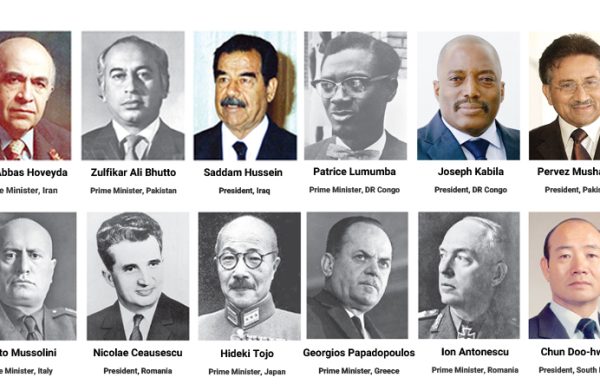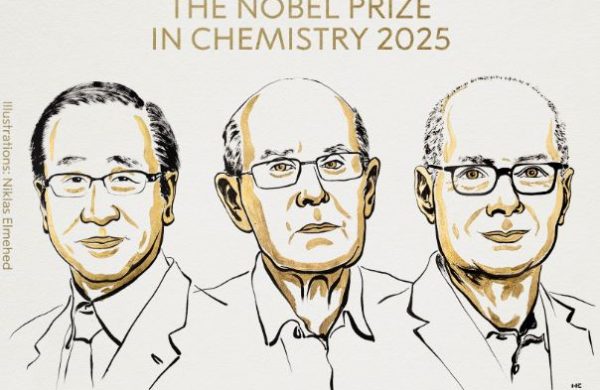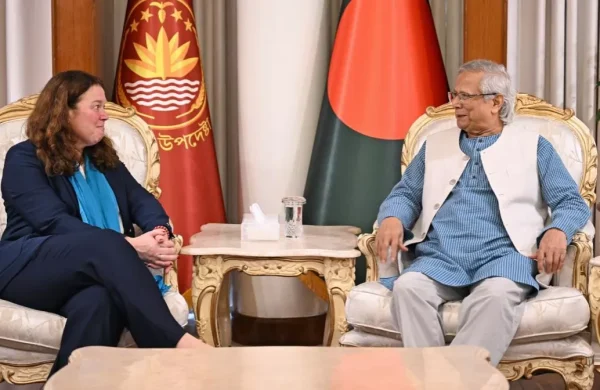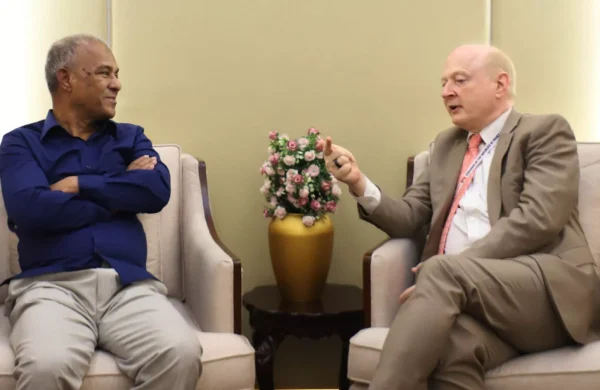A global list of 48 leaders who faced death sentences
- Update Time : Tuesday, November 18, 2025

TDS Desk:
The International Crimes Tribunal-1 (ICT) on November 17 sentenced Sheikh Hasina, the ousted prime minister, to death for crimes against humanity. She is the first former head of government in Bangladesh convicted on such charges. Sheikh Hasina joins the list of at least 47 former heads of state and government across different eras who have been sentenced to death. Detailed accounts appear in essays and analyses on global political history as well as major historical events. However, not all of those sentences were carried out. Some leaders fled before the verdicts were announced. And many others saw their sentences being reduced on appeal. To date, 35 such convicts have been executed through various methods.
Many of the leaders sentenced to death had been accused of authoritarian rule, mass killings, or crimes against humanity. Courts issued death sentences after charges were proven.
Nicolae Ceausescu was the former president of Romania. He held absolute power after becoming head of the State Council back in 1967. Afterwards, he served as the president from 1974 to 1989. His long rule included authoritarian control, restrictions on civil rights, political repression, and widespread abuses carried out by the secret police. In late 1989, a mass uprising toppled his government. Ceausescu and his wife, Elena Ceausescu, were both arrested. A swiftly convened People’s Tribunal found him guilty of genocide as well as economic sabotage. He was then executed by a firing squad later that year.
Before Ceausescu, another Romanian leader, Ion Antonescu, was also sentenced to death. He served as Romania’s prime minister during World War II, during which, the country maintained its alliance with Nazi Germany. He faced accusations of persecution and mass killings of Jewish and Roma communities. In 1945, the Romanian People’s Tribunal charged him with war crimes and crimes against humanity. He was found guilty and executed by firing squad in 1946.
Benito Mussolini, the infamous fascist leader, served as Italy’s prime minister from the 1922 to 1943 period. He attempted to flee the country when allied forces advanced during the WWII. But he was captured and later accused of war crimes. He was executed on April 28, 1945 by a firing squad.
Ivan Bagryanov served as Bulgaria’s prime minister in 1944. He was accused of supporting the Nazi alliance during his brief tenure in office. As World War II was nearing to its end, a People’s Tribunal brought him to trial. He was convicted of war crimes. Although he was executed on February 1, 1945, decades later, in 1996, a Bulgarian court overturned the death sentence.
Dobri Bozhilov served as Bulgaria’s prime minister from 1943 to 1944. He faced charges of anti-state activity and war crimes. He was found guilty and sentenced to death which was carried out by a firing squad in February 1945. Notably, his conviction was also annulled by a Bulgarian court in 1996.
Bogdan Filov was Bulgaria’s prime minister from 1940 to 1943 and worked closely with Nazi Germany during the second world war. A Soviet-backed People’s Court later sentenced him to death. The execution was carried out in February 1945. In his case as well, the country’s courts overturned the judgment in 1996.
Vidkun Quisling, a Norwegian army officer and politician, served as Norway’s head of government during the World War II. He was executed by firing squad in 1945 after being convicted of collaborating with Nazi forces.
Celal Bayar served as Turkey’s president from 1950 to 1960 and earlier as prime minister from 1937 to 1939. Amid political tension and internal unrest, he was charged with criminal offenses. A court sentenced him to death in 1961. His punishment, however, was later reduced. He was released in 1966.
Jean-Bédel Bokassa served as head of the Central African Empire from 1966till he was ousted in 1979. He was sentenced to death in absentia for the killings of opposition political leaders and activists. When he later returned to the country, an appeal reduced his sentence.
Pakistan’s former president and prime minister Zulfikar Ali Bhutto was removed from power in a 1977 military coup. He was accused of conspiring against the state and of involvement in an attempted murder. Pakistan’s higher court found him guilty and he was executed by hanging in 1979. The proceedings that led to Bhutto’s death sentence were widely disputed. The case drew intense international attention and remains a significant chapter in Pakistan’s political history.
Amir-Abbas Hoveyda served as Iran’s prime minister from 1965 to 1977 during the reign of Shah Mohammad Reza Pahlavi. He was a close ally of the Shah. Following the Islamic Revolution, he was accused of corruption and of aiding the Shah. A post-revolutionary court sentenced him to death. The execution was carried out in 1979.
Saddam Hussein served as Iraq’s president from 1979 to 2003. He was a highly popular leader across much of the Muslim world. He was removed from power in 2003 when the United States and allied forces invaded Iraq. Later, he was convicted by the Iraqi Special Tribunal on charges of genocide and crimes against humanity. He was executed by hanging in 2006.
Chun Doo-hwan was president of South Korea. During his rule, he faced accusations that included restricting political rights and persecuting opponents, as well as responsibility for the 1980 Gwangju massacre. His death sentence was eventually reduced. He was released from prison. Chun Doo-hwan died in 2019.
Ferdinand Marcos served as president of the Philippines from 1965 to 1986. He imposed martial law in the country during his rule. He was sentenced to death on charges of corruption, human rights violations, and political repression, although his sentence was also later reduced. He died of natural causes in 1989. His rule is widely known as the Marcos dictatorship.
Patrice Lumumba was one of the key leaders of Congo’s independence movement and became the country’s first prime minister in 1960. He was later captured by political rivals and sentenced to death on treason charges and was executed by a firing squad in 1961.
Francisco Macías Nguema, president of Equatorial Guinea from 1968 to 1979, drew accusations of genocide and human rights abuses. He was sentenced to death for these crimes, and the execution was carried out in 1979. He is remembered as one of the most brutal dictators in African history.
Mohammad Najibullah served as Afghanistan’s head of state from 1987 to 1992. After the Taliban uprising, he was arrested and executed by hanging.
From ancient times to the modern era, many emperors, heads of state, and heads of government have been sentenced to death for a range of crimes or, at times, because of political conflict. More recent examples include El Salvador’s President Gerardo Barrios (1859 to 1865), Russia’s Tsar Nicholas II (1894 to 1917), Chen Gongbo, chairman of China’s National Government Committee (1944 to 1945), Liang Hongzhi, chairman of the collaborationist government under Japanese occupation in China (1938 to 1940), Francisco Morazán, president of the Central American Federation (1830 to 1839), Ethiopia’s head of state Mengistu Haile Mariam (1977 to 1991), Hungary’s prime minister Imre Nagy (1953 to 1955), Turkey’s prime minister Adnan Menderes (1950 to 1960), Liberia’s president Edward James Roye (1870 to 1871), Congo’s president Joseph Kabila (2001 to 2019), Slovakia’s president Jozef Tiso (1939 to 1945), Japan’s prime minister Hideki Tojo (1941 to 1944), Ferenc Szálasi, Hungary’s head of government (1944 to 1945), Pakistan’s president Pervez Musharraf (2001 to 2008), Greece’s prime minister and president Georgios Papadopoulos (1967 to 1973), Dahomey’s president Émile Derlin Zinsou (1968 to 1969), Mali’s president Moussa Traoré (1968 to 1991), France’s Vichy head of state Philippe Pétain (1940 to 1944), and Alphonse Massamba-Débat, head of state of Congo-Brazzaville (1963 to 1968).
Many ancient and medieval rulers were also executed. These included Li Si of China’s Qin dynasty, who was executed in 208 BC; Sima Chi and Sima Ye of the Jin dynasty, who ruled from 307 to 316 AD; Ying Ziying and Zhao Gao of the Qin dynasty; and Emperor Zhao Jian of the Song dynasty. Wen Tianxiang of the Song dynasty was executed in the twelfth century.
In the seventeenth century, England’s King Charles I was executed. In the previous century, Lady Jane Grey received the same punishment. Mary, Queen of Scots, was executed in the sixteenth century. In the eighteenth century, France’s King Louis XVI was sent to the guillotine.


















